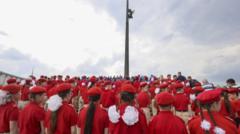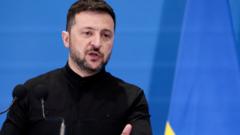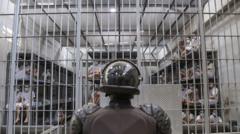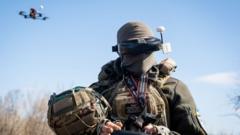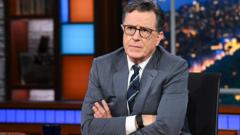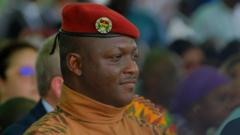In the latest developments from the frontlines of the Russia-Ukraine conflict, Russian forces are reportedly making significant advances—wresting control of key areas while wrestling with increasing military expenditures and global political pressures. During June, Russia leveraged its numerical supremacy in personnel and aerial capabilities, marking its most substantial territorial gains of the year.
### Russia's Strategic Gains in Ukraine: A Deep Dive Into Military Tactics and Economical Pressures

### Russia's Strategic Gains in Ukraine: A Deep Dive Into Military Tactics and Economical Pressures
As Russia's multifaceted operations unfold, the implications stretch beyond the battlefield, revealing deeper economic strain and shifting international dynamics.
Analysts suggest that Russia's objectives are not merely to conquer land but to systematically weaken Ukraine's military capabilities. This summer offensive is characterized by targeted strikes across a broad front, particularly focused on Ukraine's Donetsk region, which remains a critical zone of conflict. However, Moscow is confronted with a dual challenge—its ambitious military objectives may outpace the country's economic capacity to sustain them effectively.
Concurrently, Ukraine faces its own set of challenges linked to foreign support. The continuity and extent of U.S. military aid are under scrutiny; amid a backdrop of fluctuating signals from the Biden administration, President Biden emphasized NATO's collective commitment to assist Ukraine, yet the future of that support remains in question.
**Key Points to Consider:**
- **The Ground Offensive**: Russian troops have intensified operations across various regions, including Sumy and Zaporizhzhia, effectively encircling Ukrainian forces near the strategic city of Kostiantynivka.
- **Aerial Dominance**: Enhanced air support has contributed to Russia's operational successes, particularly in regions where they have established significant ground presence.
- **Economic Constraints**: Observers note that mounting military costs are straining the Russian economy; recruitment drives in Moscow have begun offering substantial bonuses to attract more personnel into service.
- **Foreign Support Dynamics**: Ukraine's military resourcing is intricately tied to U.S. policy and NATO's strategic decisions, revealing a complex interplay that could affect the war’s trajectory.
As the conflict continues to evolve, the international implications remain significant. The interplay of military strategy, economic pressures, and geopolitical alliances will shape the future of both nations at this critical juncture.
Overall, both Russia's tactical advancements and Ukraine's reliance on external assistance will be pivotal in defining the next phases of this ongoing conflict. The outcome remains uncertain, hinging on domestic performance and international responses amidst a rapidly shifting global landscape.
Concurrently, Ukraine faces its own set of challenges linked to foreign support. The continuity and extent of U.S. military aid are under scrutiny; amid a backdrop of fluctuating signals from the Biden administration, President Biden emphasized NATO's collective commitment to assist Ukraine, yet the future of that support remains in question.
**Key Points to Consider:**
- **The Ground Offensive**: Russian troops have intensified operations across various regions, including Sumy and Zaporizhzhia, effectively encircling Ukrainian forces near the strategic city of Kostiantynivka.
- **Aerial Dominance**: Enhanced air support has contributed to Russia's operational successes, particularly in regions where they have established significant ground presence.
- **Economic Constraints**: Observers note that mounting military costs are straining the Russian economy; recruitment drives in Moscow have begun offering substantial bonuses to attract more personnel into service.
- **Foreign Support Dynamics**: Ukraine's military resourcing is intricately tied to U.S. policy and NATO's strategic decisions, revealing a complex interplay that could affect the war’s trajectory.
As the conflict continues to evolve, the international implications remain significant. The interplay of military strategy, economic pressures, and geopolitical alliances will shape the future of both nations at this critical juncture.
Overall, both Russia's tactical advancements and Ukraine's reliance on external assistance will be pivotal in defining the next phases of this ongoing conflict. The outcome remains uncertain, hinging on domestic performance and international responses amidst a rapidly shifting global landscape.

